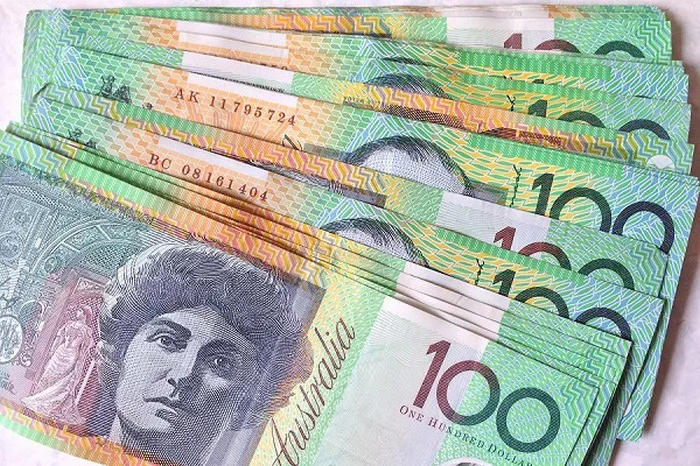Australia, renowned for its stunning landscapes, diverse wildlife, and vibrant culture, boasts a robust economy reflected in its currency. The Australian dollar (AUD) serves as the nation’s official currency, playing a pivotal role in both domestic and international transactions. However, within the realm of currency, questions often arise regarding its value, prominence, and comparison with other global currencies. In this comprehensive article, we delve into the depths of Australia’s currency landscape, shedding light on the highest currency denomination, its significance, and more.
Understanding the Australian Dollar (AUD)
The Australian dollar, denoted by the symbol “$” or “A$”, is the official currency of the Commonwealth of Australia. Introduced in 1966 to replace the Australian pound, the AUD quickly gained prominence, becoming one of the most traded currencies globally. Its ISO code is “AUD,” and it is further subdivided into 100 smaller units known as cents.
1. Historical Context
The transition from the Australian pound to the Australian dollar marked a significant shift in Australia’s monetary system. Prior to 1966, the Australian pound, divided into 20 shillings or 240 pence, was the primary currency in circulation. The adoption of the decimal currency system streamlined financial transactions and facilitated international trade, fostering economic growth and stability.
2. Factors Influencing the Value
Several factors contribute to the fluctuation of the Australian dollar’s value on the foreign exchange market. These include:
Economic Indicators: Macroeconomic indicators such as inflation rates, GDP growth, and employment figures influence investor confidence and, subsequently, the value of the currency.
Commodity Prices: Australia’s status as a major exporter of commodities like iron ore, coal, and natural gas ties the value of its currency closely to global commodity prices.
Interest Rates: The Reserve Bank of Australia (RBA) plays a crucial role in setting interest rates, impacting the attractiveness of the Australian dollar to foreign investors.
The Highest Currency Denomination in Australia
While the Australian dollar encompasses a range of banknotes and coins, one denomination stands out as the highest in terms of monetary value: the $100 banknote.
1. Features of the $100 Banknote
The $100 banknote, featuring the image of Sir John Monash, an Australian military commander and engineer, is the largest denomination in circulation. Its design includes advanced security features to deter counterfeiting, ensuring the integrity of Australia’s currency.
2. Circulation and Usage
Although the $100 banknote holds the highest value among Australian currency denominations, its circulation is relatively limited compared to lower denominations. It is primarily used for high-value transactions and as a store of value rather than for everyday purchases.
Significance of the Highest Currency Denomination
The $100 banknote plays a crucial role in Australia’s financial landscape, serving various purposes and reflecting broader economic trends.
1. Facilitating High-Value Transactions
Due to its high monetary value, the $100 banknote facilitates large-scale transactions such as property purchases, investments, and business transactions. Its use in these contexts underscores its importance in fostering economic activity.
2. Store of Value
For individuals and businesses seeking to store wealth securely, the $100 banknote serves as a reliable store of value. Its high denomination reduces the need for large volumes of physical currency to store significant sums of money.
3. Reflection of Economic Conditions
The circulation and usage patterns of the $100 banknote can offer insights into broader economic conditions. During periods of economic uncertainty or instability, there may be an increased demand for high-denomination banknotes as individuals and businesses seek to preserve wealth amidst uncertainty.
Comparison with Other Global Currencies
While the Australian dollar holds its own on the international stage, it is often compared to other global currencies, particularly those of major economies such as the United States, Eurozone, and Japan.
1. Exchange Rates
Exchange rates play a pivotal role in determining the relative value of the Australian dollar against other currencies. Fluctuations in exchange rates can impact trade competitiveness, tourism flows, and foreign investment levels.
2. Purchasing Power Parity (PPP)
Purchasing power parity provides another lens through which to compare currencies. PPP takes into account the relative cost of goods and services between countries, offering insights into the real value of currencies beyond exchange rates.
3. Reserve Currency Status
Some currencies, such as the US dollar and the euro, enjoy reserve currency status, meaning they are held by central banks and governments as part of their foreign exchange reserves. While the Australian dollar is not considered a reserve currency on the same scale, its status as a freely traded currency contributes to its global standing.
FAQs
1. Is the Australian dollar the strongest currency in the world?
The strength of a currency is subjective and can be influenced by various factors such as economic stability, inflation rates, and interest rates. While the Australian dollar is robust and widely traded, it may not necessarily be the strongest currency in the world at any given time.
2. Are there higher denominations of Australian currency than the $100 banknote?
No, the $100 banknote is the highest denomination of Australian currency currently in circulation. While there were previously higher denominations, such as the $1,000 banknote, they have been phased out of circulation.
3. How can I exchange Australian dollars for other currencies?
Australian dollars can be exchanged for other currencies at banks, currency exchange offices, and airports. Additionally, travelers can use ATMs to withdraw local currency using their Australian bank cards, although fees may apply.
See Also Will the Australian Dollar Collapse? Factors & Forecasts
In conclusion
The Australian dollar, anchored by the $100 banknote as its highest denomination, plays a pivotal role in Australia’s economy and financial landscape. Its stability, liquidity, and global recognition underscore its significance both domestically and internationally. Understanding the nuances of Australia’s currency enriches our comprehension of its economic dynamics and global standing.


